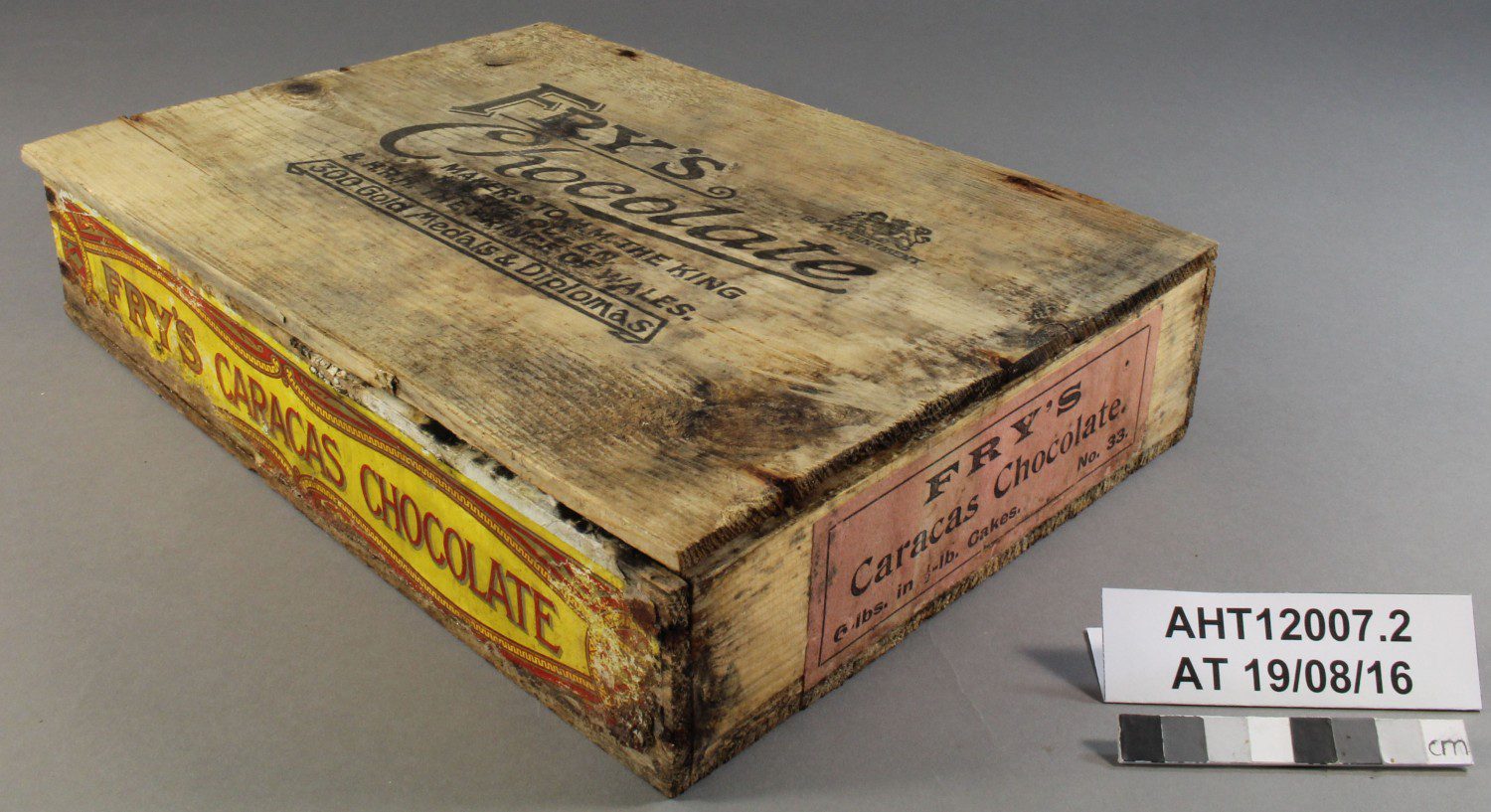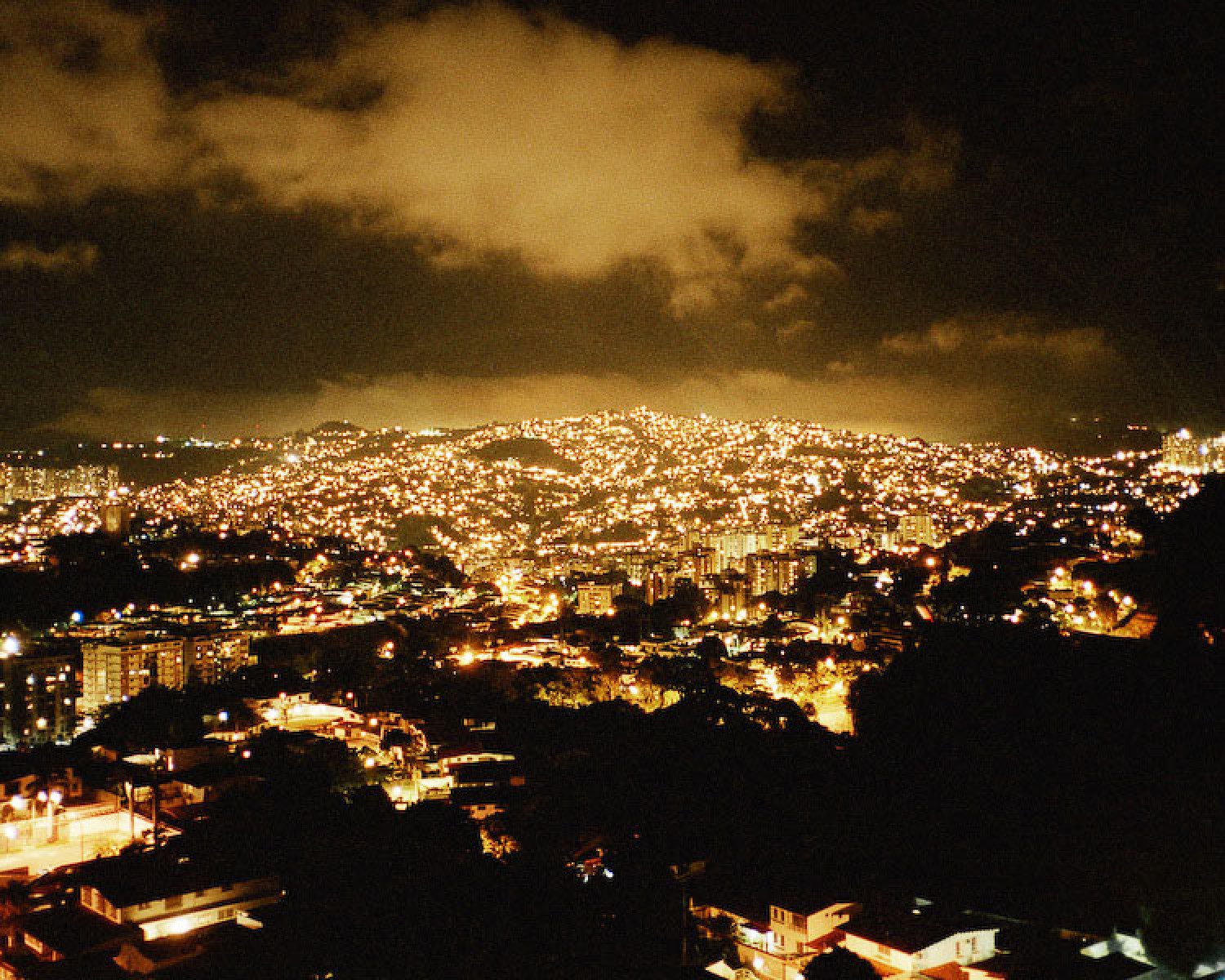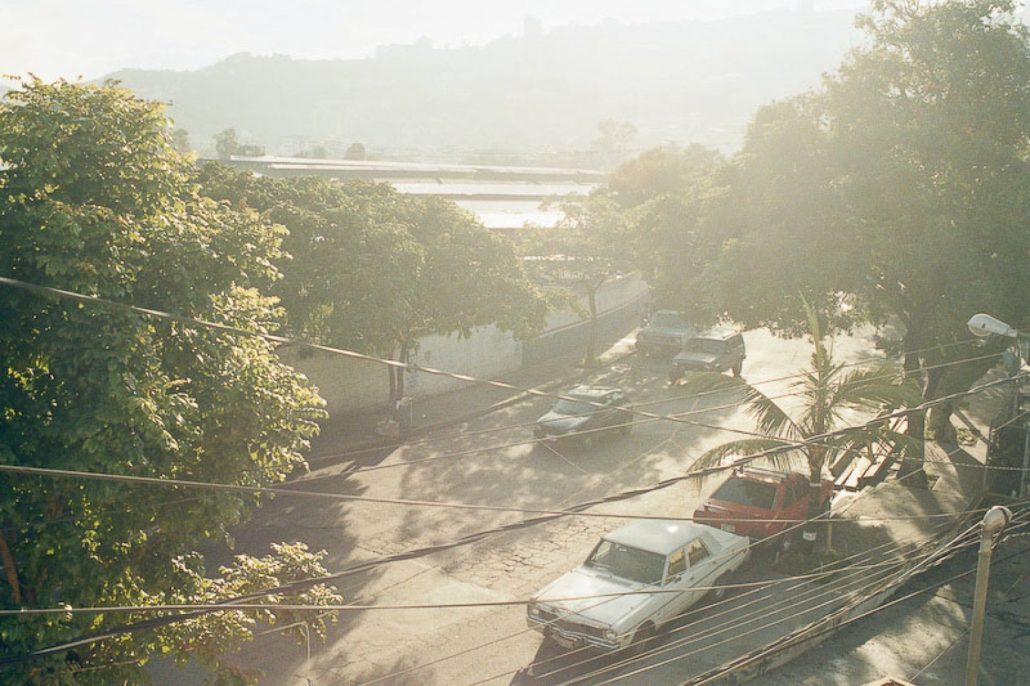A Venezuelan Connection
By Josefin Jimenez
Conservator Ciaran Lavelle mused in an earlier post Life is like a box of Chocolates about the Fry & Son’s Caracas Chocolate box and the randomness of life, and I can here add another random little piece. As the paper conservator, I worked with repairing the paper components of the box, two exterior labels and the remains of a white interior paper lining with a stamped doily pattern.
 Antarctic Heritage Trust
Antarctic Heritage Trust Caracas is the capital of Venezuela, perched atop the northern coast of the South American continent, the country known for its oil, its cocoa, and political unrest. Curiously, it is also where my father was born and lived until his early twenties.
 Emilia Bergmark-Jimenez
Emilia Bergmark-Jimenez The sprawl of Caracas at night
To me and my siblings, growing up in Sweden; almost as far away from Venezuela as it is from New Zealand, it was a place both endlessly distant and strangely present. It was where my paternal grandmother, my abuela Vicenta lived, it was there my dad had once fallen from a wall and cracked his head open (bending down he would let us run our hands along his head to feel the scar), it was where my tios and tias and primitos lived. It was where my dad once had kept a baby caiman as a living pet in his bath tub. Dad would tell us stories about his family, about funerals, his school friends, about rich people and poor people, about drunks and strangers and about his mother’s house in Los Rosales. Dad came to Sweden by chance (on his way to study engineering in Soviet Russia) and decided to stay, eventually having five kids there. J.S Fry’ & Sons was established in 1822 and became the largest commercial producer of chocolate in Britain, the factory located in Union Street in Bristol. It was also the first company in England to produce eating chocolate, the Perl chocolate bar and Caracas Chocolate. Fry & Sons imported their cocoa beans from Venezuela, where at the time there was only one factory for domestic production and the bulk of the raw beans were exported. The beans would be transported to the factory in Bristol where they would be roasted, ground and shaped into chocolate bars. The bars were packed into boxes or tins and transported, and this particular box all the way to Antarctica with Borchgrevink and the first British Antarctic Expedition, 1898 ̶ 1900, to be found and taken to New Zealand where it would meet a genetic descendant, a stranger from home.
 Emilia Bergmark-Jimenez
Emilia Bergmark-Jimenez The view from my grandmother’s house
My dad didn’t return to Caracas for 20 years until he accompanied my brother there in 2002 and came there regularly after. My abuela died in October 2015 in her house, the last time he saw her was three years earlier as the political situation prevented travel. I have later come to doubt the veracity of the story of the baby caiman.


 Antarctic Heritage Trust
Antarctic Heritage Trust